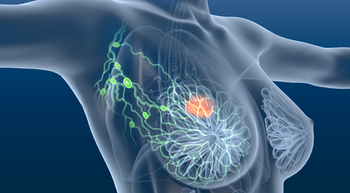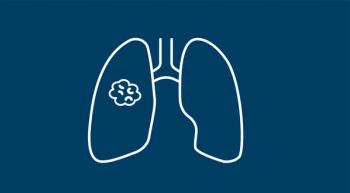
Tremelimumab plus durvalumab (STRIDE) showed a manageable immune-related adverse event profile in the phase 3 HIMALAYA trial.

Tremelimumab plus durvalumab (STRIDE) showed a manageable immune-related adverse event profile in the phase 3 HIMALAYA trial.

Statistically and clinically meaningful improvements in invasive disease-free survival were observed among patients with hormone receptor–positive/HER2-negative early breast cancer who received ribociclib in addition to endocrine therapy.

The 3 year-pelvic recurrence rates with simple hysterectomy were comparable with those of radical hysterectomy among patients with low-risk, early-stage cervical cancer.

Pediatric patients with leukemia in low- and middle-income countries saw improvements in survival outcomes following implementation of the WHO Framework for Action model.

Updated findings from KEYNOTE-826 support the use of pembrolizumab plus chemotherapy with or without bevacizumab for select patients with cervical cancer.

A telephone-based weight loss program proved to be efficacious in overweight or obese women with breast cancer and may lead to improved disease outcomes in the long run.

Over half of patients with lower-risk myelodysplastic syndrome treated with luspatercept achieved transfusion independence.

Patients with pancreatic and gastric cancers residing in states with expanded Medicaid had improved survival rates.

Minimally invasive distal pancreatectomy was a safe and effective alternative compared with open distal pancreatectomy in patients with resectable pancreatic cancer.

Sarah Donahue, MPH, NP, AOCNP, explains the trial design of the pivotal DESTINY-Breast04 trial and discusses how the promising performance of trastuzumab deruxtecan might impact patients with unresectable or metastatic HER2-low breast cancer.

An analysis of patient-reported outcomes from the phase 3, INTRIGUE trial (NCT03673501) showed that ripretinib had a more tolerable safety profile than sunitinib in treating patients with advanced GIST tumors.

Lidia Schapira, MD, FASCO, discusses the importance of rigorous baseline measurement in improving the assessment and management of distressful cancer symptoms.

A quality time without symptoms of toxicities analysis of the pivotal ZUMA-7 trial found that patients with relapsed or refractory large B-cell lymphoma experienced longer time without toxicity with axicabtagene ciloleucel than with standard of care.

Brexucabtagene autoleucel, a CAR T-cell therapy approved in 2021 for relapsed or refractory B-cell acute lymphoblastic leukemia, showed efficacious results and promising safety data at 2-year follow-up.

Ribociclib was associated with significantly favorable symptom-related quality of life scores compared with abemaciclib among women with hormone receptor–positive, HER2-negative advanced breast cancer.

Patients receiving bevacizumab plus olaparib to treat newly diagnosed ovarian cancer experienced significantly longer time without signs of toxicity compared with placebo.

Nivolumab, whether in combination with ipilimumab or as a monotherapy, was associated with improved overall survival, progression-free survival, and melanoma-specific survival, compared with ipilimumab in advanced melanoma.

Nurse navigators may play a key role in mitigating toxicities from chemotherapy and perform geriatric assessments for patients treated at hematology/oncology clinics.

Darcy Burbage, DNP, RN, AOCN, CBCN, discusses the top takeaways from the 2022 ASCO Annual Meeting for oncology nurses.

Data from the CheckMate 648 trial informed the FDA’s recent approval of 2 nivolumab combinations for esophageal squamous cell carcinoma. A 1-year follow-up analysis highlighted key safety and time-to-event data surrounding immune-related toxicities.

We rounded up 5 stories from the 2022 ASCO Annual Meeting that are of most value to oncology nurses.

Results of a single-center study presented at the 2022 ASCO Annual Meeting showed that oral minoxidil may be effective in treating late alopecia. Moving forward, these efforts in survivorship care will need to be expanded to less resourced areas, experts said.

The intracranial objective response rate was 32% among patients with KRAS G12C–mutant, non–small cell lung cancer who received adagrasib.

Phase 2 findings found that patients with chemotherapy-induced anemia experienced increases in hemoglobin following treatment with roxadustat.

Daratumumab plus lenalidomide and dexamethasone bested standard therapy in producing rapid, deep, and durable responses across subgroups of patients with newly diagnosed multiple myeloma.

Phase 3 findings showed that panitumumab plus mFOLFOX significantly improved overall survival in patients with RAS wild-type metastatic colorectal cancer.

Regardless of other identified driver genomic alterations, patients with heavily pretreated, advanced, non–small cell lung cancer achieved encouraging responses with patritumab deruxtecan.

A study analyzing the long-term adrenal insufficiency outcomes of patients receiving immune checkpoint inhibition therapy found that secondary insufficiency was more common than primary in this patient population.

A real-world analysis showed that the proportion of women with ovarian cancer who required dose modifications or treatment discontinuations while receiving PARP inhibitors differed significantly between olaparib, niraparib, and rucaparib.

Patients with hormone receptor¬–positive, HER2-negative, node-positive high-risk early breast cancer who have certain characteristics may benefit from early dose adjustments with adjuvant abemaciclib.